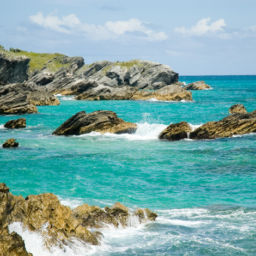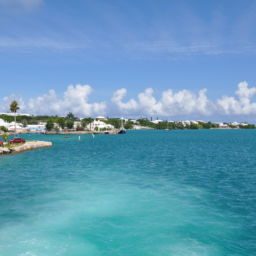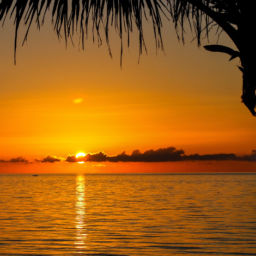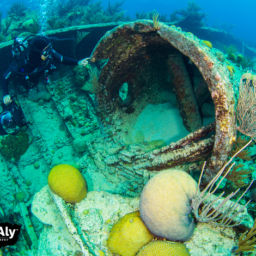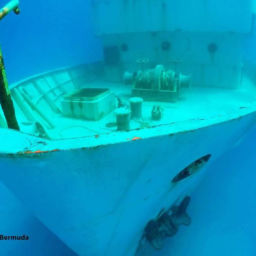Of Bermuda’s more than 300 wrecks it’s unlikely that there is one more accessible to both divers and snorkelers than the wreck of the Pollockshields. This ship had a varied history but last changed hands when, as a German ship, it was captured by the British during World War I and given its final name. In August 1915, as the war was raging, it left Cardiff, Wales with a cargo of 350 tons of ammunition. The ship encountered a hurricane, and as the storm eased, it found itself with a lee shore and ran aground on the reefs some 150 yards offshore from what is now the Elbow Beach Resort. There are images of heroic locals who dragged a boat over 10 miles along Bermuda’s roads with horses, and of men heaving to allow them to string lines to the ship so the crew could make it safely ashore. Sadly, the captain was the only casualty, dying when he went below in an attempt to retrieve more life jackets for those on the deck.
The ship remained very much intact until the 1960s when it was deemed to be dangerous to divers and the generally curious who ventured onto the wreck. Famed Bermuda diver Teddy Tucker was engaged to destroy the ship above water. It still lies in water between 15 and 40 feet deep. On calm days it’s the perfect spot for novice divers and snorkelers to experience a wreck in shallow water, providing extended bottom time and plenty to see from the surface. Because of the location of the wreck, however, in rough conditions there can be significant surge, which limits it to the more experienced. Strong swimmers or those who kayak out from Elbow Beach Resort can easily paddle out to the wreck. Shells and depth charges still remain on the wreck so of course care must be taken when diving. On the reef line can be found its winch gear and boilers, which are big enough to swim through. Just off the wreck itself are reefs with beautiful breakers and a couple of caves and swim-throughs, often containing groupers, parrotfish and reef fish.
Pollockshields – 1915 – Elbow Beach from Dr Philippe Max Rouja on Vimeo.
By guest blogger Mark Diel


